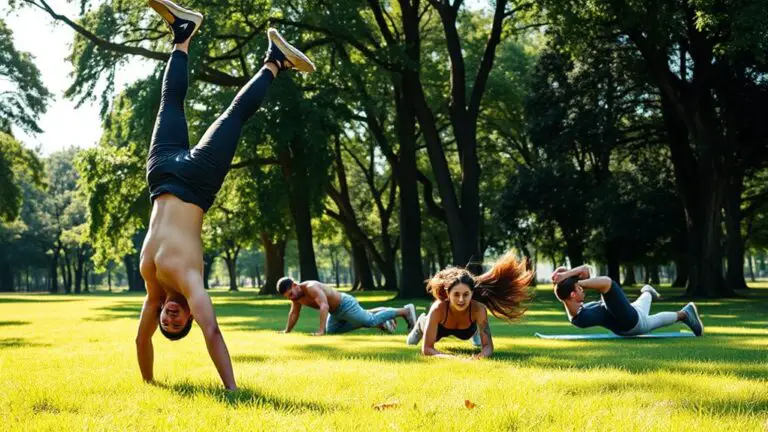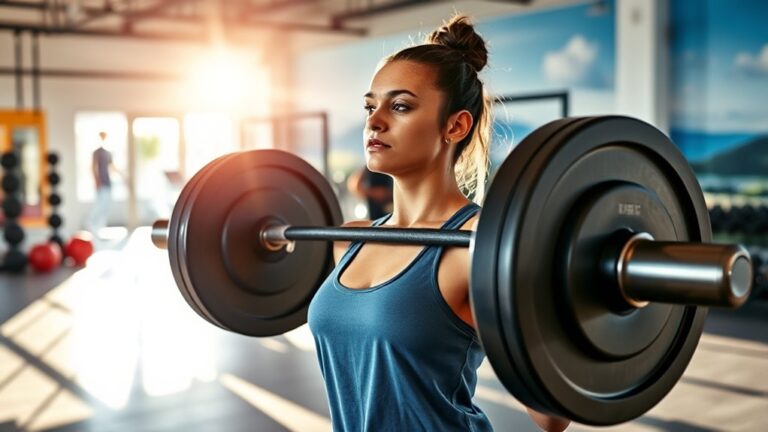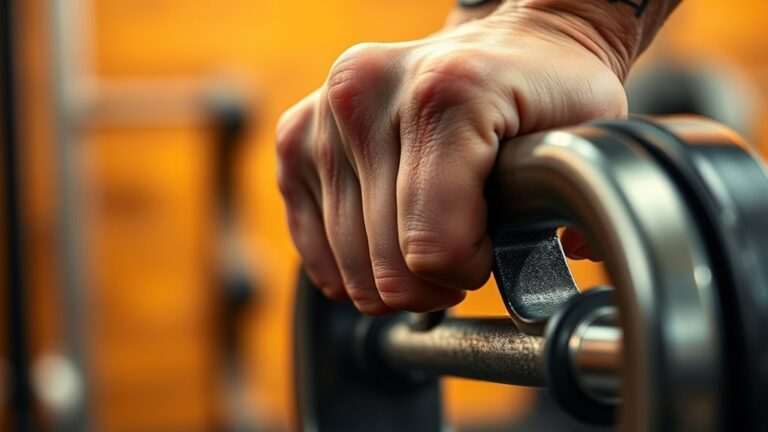How Olympic Weightlifting Can Improve Athletic Performance
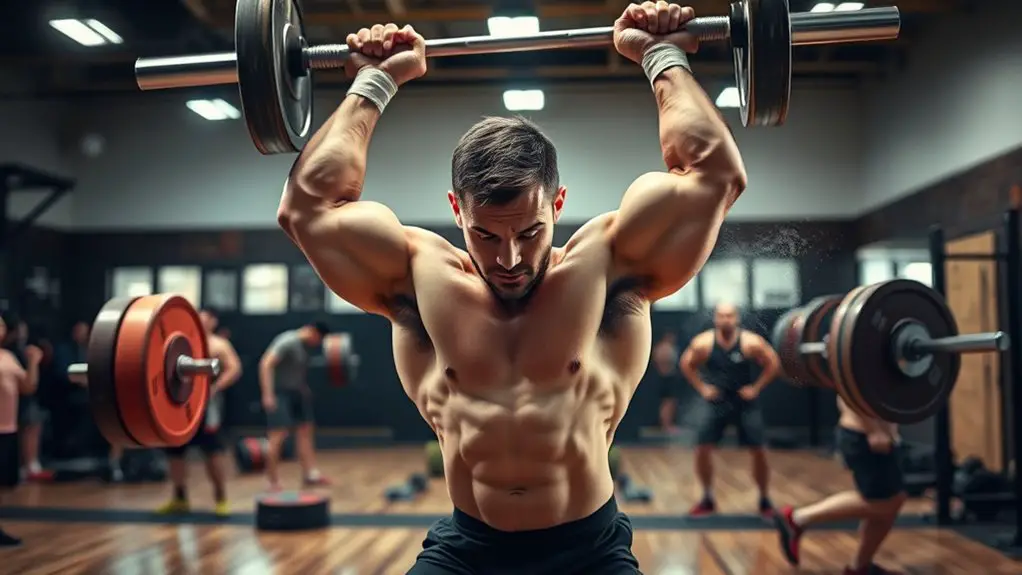
Olympic weightlifting can greatly improve your athletic performance by enhancing explosive power and functional strength through its dynamic lifts. These movements engage multiple muscle groups, promoting coordination and balance while fostering essential neuromuscular adaptations. You’ll also benefit from increased speed and agility, alongside reduced injury risk due to better technique and body awareness. Additionally, Olympic lifts cultivate mental toughness, helping you focus under pressure. Discover how to incorporate these benefits into your training regimen for best results.
The Science Behind Olympic Weightlifting
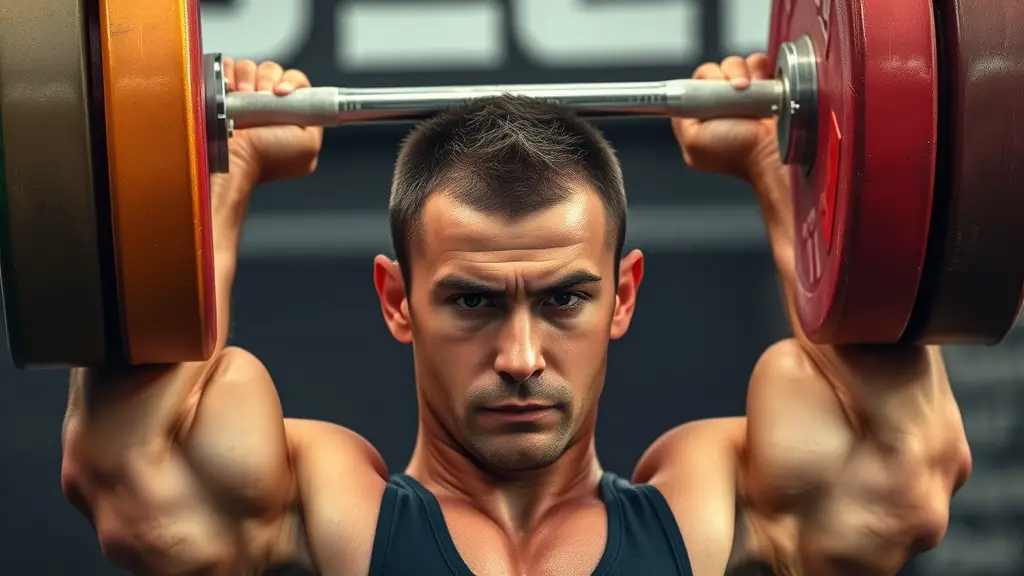
While many athletes focus on traditional strength training, the science behind Olympic weightlifting reveals its unique benefits for enhancing athletic performance. A thorough biomechanical analysis indicates that Olympic lifts require ideal force production, which translates to improved power output in various sports. These lifts engage multiple muscle groups synergistically, promoting efficient movement patterns and coordination.
Moreover, Olympic weightlifting fosters significant neuromuscular adaptations. The rapid recruitment of motor units during lifts enhances both strength and speed, which are critical for athletic success. Studies show that athletes who incorporate Olympic lifts develop greater explosive strength and improved overall athletic capabilities compared to those who solely engage in conventional resistance training.
Enhancing Explosiveness Through Olympic Lifts
Incorporating Olympic lifts into your training regimen can greatly enhance your explosiveness, primarily through targeted power development techniques. Research shows that these lifts not only improve speed and agility but also strengthen your core, which is essential for athletic performance. Understanding these benefits can help you tailor your workouts for maximum effectiveness.
Power Development Techniques
Harnessing the explosive power of Olympic lifts can greatly enhance athletic performance across various sports. By focusing on dynamic movements like the clean and jerk or snatch, you can greatly improve your force production capabilities. These lifts engage multiple muscle groups, promoting efficient motor unit recruitment necessary for explosive strength. Research shows that integrating Olympic weightlifting into your training regimen enhances your ability to generate power quickly, a vital aspect for athletes in speed-dependent sports. Additionally, these lifts help develop coordination and balance, further contributing to overall athletic prowess. Implementing specific power development techniques, such as plyometrics alongside Olympic lifts, can maximize your training outcomes, ensuring you tap into your full explosive potential effectively.
Speed and Agility Boost
When athletes integrate Olympic lifts into their training, they greatly enhance their speed and agility, fundamental components for peak performance. The explosive nature of these lifts demands rapid force production, translating directly to improved reaction time and lateral movement. Research indicates that Olympic lifting enhances the stretch-shortening cycle, allowing for more efficient energy transfer during quick directional changes. This efficiency not only helps in accelerating but also in decelerating movements, essential for sports requiring swift agility. In addition, the dynamic stabilizing muscles engaged during lifts contribute to better balance and coordination, which are critical for maintaining speed while maneuvering around opponents. Ultimately, incorporating Olympic lifts into your regimen can greatly boost your overall athletic performance.
Core Strength Enhancement
Although often overlooked, core strength plays a pivotal role in enhancing explosiveness during Olympic lifts. When you engage your core effectively, you create a solid foundation for power transfer throughout your body. This core engagement is essential for maintaining stability during dynamic movements like the snatch or clean and jerk. Research indicates that a strong core improves overall athletic performance by facilitating better force generation and reducing injury risk. Stability training, which integrates exercises focusing on core strength, complements Olympic lifting by developing the muscles that stabilize your spine and pelvis. By prioritizing core strength in your training regimen, you’ll not only maximize your lifting potential but also enhance your overall athletic explosiveness, leading to improved performance across various sports.
Building Functional Strength for All Sports
Building functional strength is essential for athletes across all sports, as it enhances power generation and improves core stability. Research indicates that Olympic weightlifting movements engage multiple muscle groups, leading to greater force production and overall athletic performance. By integrating these lifts into your training regimen, you can develop the strength necessary to excel in your specific sport.
Enhanced Power Generation
Enhanced power generation is essential for athletes across all sports, as it directly influences performance outcomes and overall effectiveness in competition. Olympic weightlifting develops explosive strength through dynamic movements like the clean and jerk and the snatch, which require rapid force production. This practice enhances athletic conditioning by improving the neuromuscular efficiency and coordination necessary for peak performance. Research indicates that Olympic weightlifting increases the rate of force development, vital for activities that demand quick bursts of power, such as sprinting or jumping. Incorporating these lifts into your training regimen can greatly elevate your ability to generate force, resulting in improved performance metrics in your chosen sport. Ultimately, enhanced power generation equips you with a competitive edge.
Improved Core Stability
While many athletes focus on strength and power, improving core stability is equally essential for maximizing functional strength across all sports. Olympic weightlifting promotes core engagement through dynamic movements, enhancing your ability to stabilize your body during athletic performance.
Here are three key benefits of improved core stability:
- Increased Balance: A strong core helps maintain balance during complex movements, reducing injury risk.
- Enhanced Force Transfer: Core stability allows for better force generation, translating power from your legs to your upper body effectively.
- Improved Posture: Strengthening the core supports better posture, essential for ideal movement mechanics.
Incorporating stability training from Olympic weightlifting can ultimately lead to enhanced performance, making you a more versatile athlete.
Improving Coordination and Balance
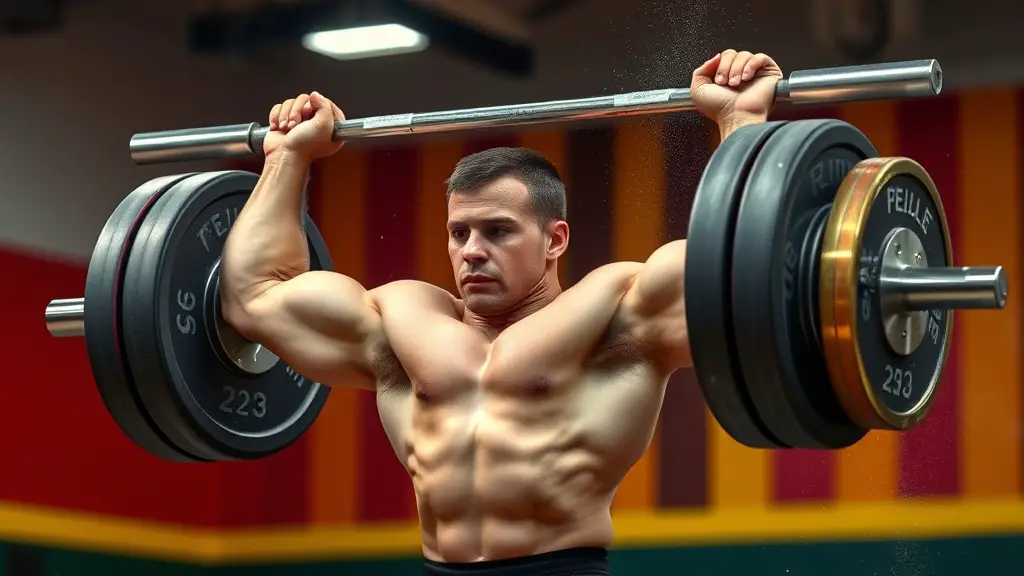
As athletes endeavor to optimize their performance, incorporating Olympic weightlifting into training regimens can greatly improve coordination and balance. The dynamic movements in Olympic lifts require precise timing and body awareness, enhancing your ability to control your center of gravity. This translates well into sports, where agility and stability are paramount.
| Benefit | Olympic Weightlifting | Balance Training |
|---|---|---|
| Coordination Drills | Complex lifts demand synchronization of multiple muscle groups | Focus on stability and control in various positions |
| Core Engagement | Engages core muscles profoundly, reinforcing body alignment | Strengthens core for improved balance |
| Dynamic Movement | Involves explosive actions that enhance proprioception | Static and dynamic exercises for overall stability |
Injury Prevention and Rehabilitation Benefits
Incorporating Olympic weightlifting into your training not only enhances coordination and balance but also plays a significant role in injury prevention and rehabilitation. Here are three key benefits:
- Enhanced Joint Stability: Olympic lifts improve the strength of the muscles surrounding your joints, which helps to prevent injuries by stabilizing them during dynamic movements.
- Improved Muscle Activation: These lifts promote effective muscle recruitment patterns, reducing the risk of imbalances that could lead to injury. By focusing on proper technique, you can retrain your body to move more efficiently.
- Rehabilitation Techniques: Olympic weightlifting can be integrated into rehabilitation programs, aiding recovery from injuries. The explosive nature of these lifts can help restore power and strength progressively.
Boosting Speed and Agility
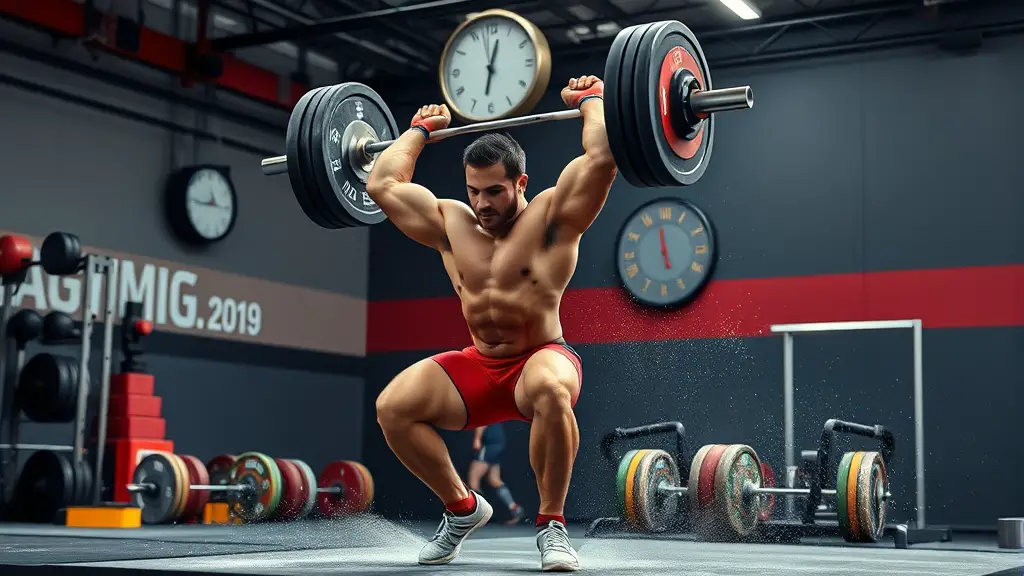
Olympic weightlifting can greatly enhance your speed and agility due to its emphasis on explosive power and dynamic movement patterns. The quick, powerful lifts involved—such as the clean and jerk—require rapid muscle fiber recruitment, which translates well into improved acceleration and overall speed. Research indicates that athletes who incorporate weightlifting into their training see marked improvements in their sprint times.
Additionally, the coordination and balance developed through Olympic lifts complement agility exercises. You’re training your neuromuscular system to respond swiftly, enhancing your ability to change directions quickly, which is vital in sports. When you combine speed drills with Olympic weightlifting, you’re not just building strength; you’re also refining the athletic skills necessary for effective movement on the field or court. This dynamic integration of strength and speed training is essential for elevating your performance to the next level.
Mental Toughness and Focus Development
While many athletes focus on physical training, the development of mental toughness and focus through Olympic weightlifting can be equally transformative. Engaging in this discipline not only enhances strength but also cultivates key psychological skills necessary for peak performance.
Here are three ways Olympic weightlifting boosts your mental resilience:
- Goal Setting: Each lift requires specific targets, fostering a mindset geared towards achieving incremental goals.
- Concentration Exercises: The precision required in lifting translates to improved focus during competition, enhancing your ability to maintain composure under pressure.
- Mental Resilience Strategies: The challenges faced during training, such as overcoming failed lifts, build grit and tenacity, essential for tackling adversity in any sport.
Incorporating Olympic Weightlifting Into Training Regimens
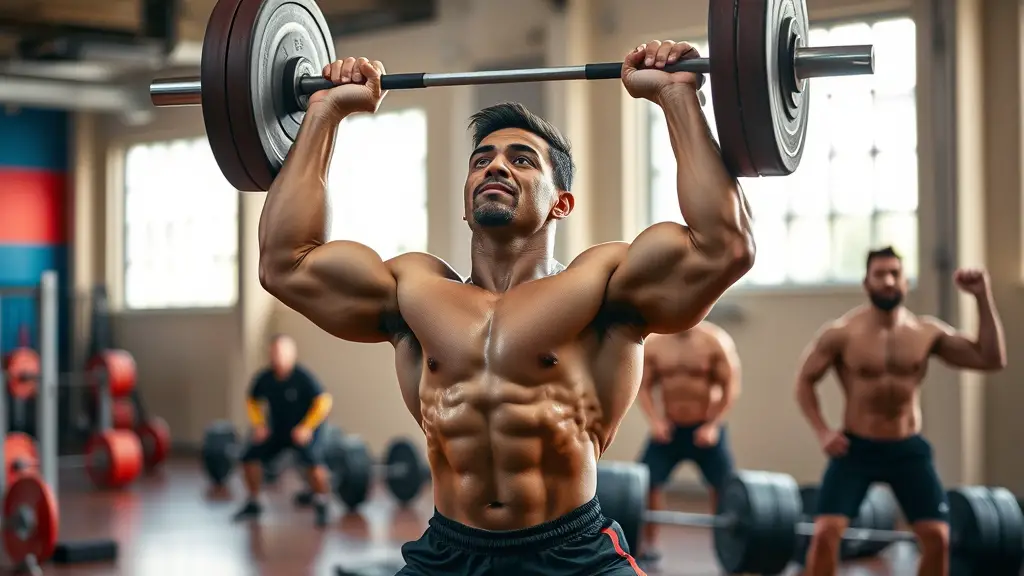
When you integrate Olympic weightlifting into your training regimen, you’re not just adding a new set of exercises; you’re enhancing your overall athletic performance through a structured approach that emphasizes strength, power, and coordination. To effectively incorporate these lifts, start with technique refinement, focusing on the snatch and clean and jerk. This guarantees you develop the correct motor patterns, maximizing efficiency and reducing injury risk.
Next, prioritize program customization based on your specific sport and goals. For example, if you’re an athlete in a power sport, incorporate heavier lifts with lower volume, while endurance athletes may benefit from lighter weights with higher repetitions. Additionally, consider integrating complementary exercises, such as pulls and squats, to reinforce strength and stability. Regular feedback and assessment will help you monitor progress and adjust the program accordingly, guaranteeing that Olympic weightlifting becomes an integral part of your athletic development strategy.
Frequently Asked Questions
Can Beginners Safely Start Olympic Weightlifting Without Prior Experience?
When it comes to starting Olympic weightlifting, you can’t judge a book by its cover. Beginners can safely begin this sport without prior experience, provided they focus on proper beginner techniques and adhere to essential safety precautions. It’s vital to learn the lifts gradually, using lighter weights to master form. Consider working with a knowledgeable coach who can guide you, helping you build a strong foundation while minimizing the risk of injury.
What Equipment Is Necessary for Olympic Weightlifting Training?
For Olympic weightlifting training, you’ll need specific equipment to guarantee proper technique and safety. Start with barbell selection; choose a standard Olympic barbell that’s rated for your intended loads. Additionally, weightlifting shoes are essential for providing stability and a solid base during lifts. They feature elevated heels that improve your squat depth and overall posture. Investing in quality gear enhances your performance and can greatly reduce the risk of injury during training sessions.
How Often Should I Practice Olympic Lifts Each Week?
To optimize your Olympic lifting practice, frequency guidelines suggest training three to five times a week, depending on your experience level. For beginners, three sessions may suffice, while more advanced lifters can handle five. Adjust your training intensity based on recovery and performance; lighter sessions can focus on technique, while heavier days emphasize strength. Balancing frequency with intensity is vital for progress, preventing burnout, and ensuring consistent improvements in your lifts.
Are There Age Restrictions for Participating in Olympic Weightlifting?
There aren’t strict age restrictions for Olympic weightlifting, but youth participation typically falls under specific guidelines. Competitions often have categories based on age, such as youth, junior, and senior levels. Athletes as young as 13 can compete in youth events, while junior categories usually include those up to 20 years old. It’s crucial to guarantee proper coaching and technique to promote safety and effective development in young lifters, regardless of competitive level.
Can Olympic Weightlifting Help With Specific Sports Performance?
Yes, Olympic weightlifting can enhance your performance in specific sports by developing explosive power, strength, and coordination. By mastering weightlifting techniques, you’ll improve your overall athleticism, which translates well to sports like football, basketball, and track. The emphasis on speed and technique in lifts like the clean and jerk directly benefits your ability to accelerate quickly and maintain stability, providing sport-specific benefits that can give you a competitive edge in your athletic endeavors.

